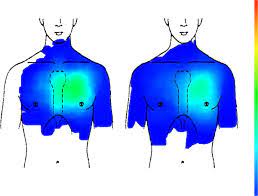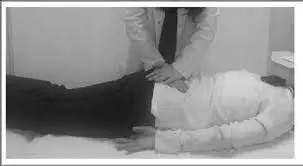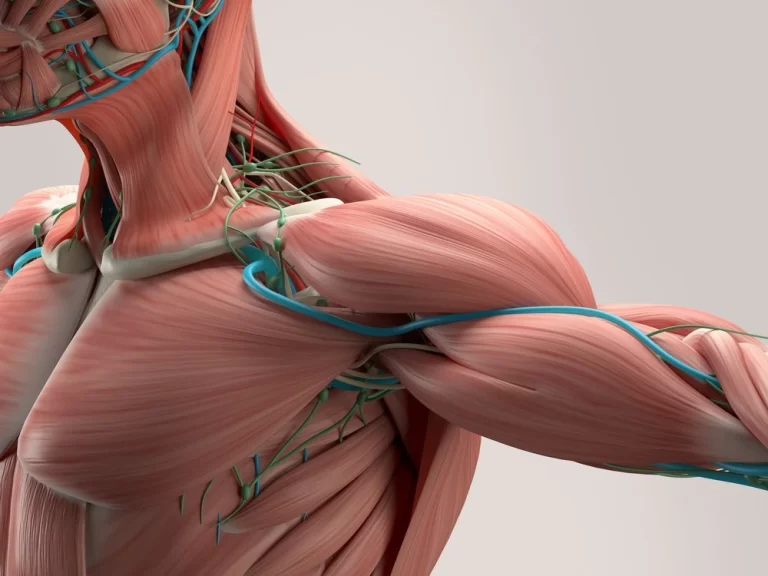Chest wall syndrome
Table of Contents
Description
Chest wall syndrome is a condition characterized by chest pain that is not related to the heart or lungs, but rather to the muscles, bones, and cartilage of the chest wall. It is also known as costochondritis or Tietze syndrome.
The pain associated with chest wall syndrome is typically sharp, stabbing, and localized to one area of the chest. It can be worsened by movement or deep breathing and may be accompanied by tenderness or swelling in the affected area.
Chest wall syndrome is often a result of an injury, strain, or overuse of the chest muscles or cartilage. It can also be caused by certain medical conditions, such as arthritis or fibromyalgia.
Treatment for chest wall syndrome typically involves pain management, rest, and physical therapy. Over-the-counter pain relievers, such as ibuprofen or acetaminophen, can help alleviate pain and inflammation. Ice or heat therapy can also be used to reduce swelling and discomfort.
If the pain persists or is severe, it is important to seek medical attention to rule out any other underlying medical conditions.
Chest wall syndrome is a condition that affects the muscles, bones, and cartilage of the chest wall, causing chest pain that is unrelated to the heart or lungs. Here are some common causes and symptoms of chest wall syndrome:
Causes of Chest wall syndrome:
- Injury or trauma to the chest, like from a fall or car accident
- Overuse or strain of the chest muscles, such as from excessive exercise or heavy lifting
- Medical conditions that affect the chest wall, such as arthritis or fibromyalgia
- Repetitive motions, such as playing a musical instrument or typing
Lung problems
- Pneumonia
- Pulmonary embolism
Cardiovascular problems
- Heart attack
- Angina
- Pericarditis
- Myocarditis
Gastrointestinal conditions
- Peptic ulcer
- Gastroesophageal reflux disease
- Gall stones
Symptoms of Chest wall syndrome:
- Sharp or stabbing pain in the chest that may be localized to one area
- Pain that worsens with any motion, deep breathing, or coughing
- Tenderness or swelling in the affected area
- Pain that may be mistaken for a heart attack or other cardiac condition
- Pain that improves with rest or over-the-counter pain medication
- It is important to note that chest pain can also be a symptom of a heart attack or other serious medical condition, so it is important to seek medical attention if you are experiencing chest pain, particularly if it is sudden, severe, or accompanied by other symptoms such as shortness of breath, nausea, or dizziness.
How to diagnose chest wall syndrome?
Diagnosing chest wall syndrome typically includes a physical exam and an inspection of the person’s medical history and symptoms. In some cases, additional tests can be ordered to find out other potential causes of chest pain.
Here are some common methods for diagnosing chest wall syndrome:
Physical exam:
- During a physical exam, the doctor will examine the chest wall for tenderness, swelling, or other signs of injury or inflammation.
- They may also ask the patient to move or stretch the affected area to assess pain and range of motion.
Medical history:
- The doctor will ask the patient about their medical history, including any recent injuries, surgeries, or medical conditions that may be contributing to their chest pain.
Imaging tests:
- In some cases, imaging tests such as X-rays, CT scans, or MRIs may be ordered to rule out other potential causes of chest pain, such as a fractured rib or lung problem.
Laboratory tests:
- Blood tests may be ordered to rule out other potential causes of chest pain, such as a heart attack or infection.
It is important to note that chest pain can be a symptom of a serious medical condition, such as a heart attack or pulmonary embolism, so it is important to seek medical attention if you are experiencing chest pain, particularly if it is sudden, severe, or accompanied by other symptoms such as shortness of breath, nausea, or dizziness.
Treatment for Chest Wall syndrome
The treatment for chest wall syndrome typically involves pain management, rest, and physical therapy. Here are some common methods for treating chest wall syndrome:
Pain management:
- Over-the-counter pain relievers such as ibuprofen or acetaminophen can help alleviate pain and inflammation.
- In some cases, prescription pain medications may be necessary to manage severe pain.
- Possible treatments for chest wall pain
- Treatment for chest wall pain will differ depending on the cause.
Musculoskeletal problems
- These conditions are treated with heat or ice, anti-inflammatory drugs like ibuprofen (Advil) or naproxen (Aleve), muscle relaxers, stretching, and physical therapy.
- A person should also try to avoid activities that aggravate the pain.
- For more severe or persistent cases, the doctor can suggest corticosteroid injections to help decrease inflammation.
Rheumatic conditions
- Rehabilitation of chest wall pain is part of the entire management of each of these conditions.
- The physician will help the person decide which medication is best for the person.
Lung infections
- Like other infections, lung conditions like pneumonia are usually treated with antibiotics.
- If the chest wall pain is caused by a heart attack or other serious heart condition, a person can receive blood thinners or medications that open arteries.
Other treatments involve:
Cardiac catheterization
At the time of cardiac catheterization, a doctor may:
- Locate narrowing or blockages in the blood vessels that might cause chest pain (angiogram)
- Look out for the pressure and oxygen levels in various parts of the heart (hemodynamic assessment)
- Look out how perfectly the heart pumps blood (right or left ventriculogram)
- Bring a sample of tissue from the heart (biopsy)
- Evaluate heart problems present from birth (congenital heart defects)
- Diagnose heart valve disease
- Examine the blood vessels for blood clots
Coronary artery bypass surgery
Coronary artery bypass surgery, also identify as CABG (pronounced “cabbage”), is a surgical method used to manage coronary artery disease. In this method, a surgeon creates a new way for blood to flow to the heart by bypassing a blocked or narrowed section of a coronary artery.
Here’s an overview of what happens during CABG surgery:
- Anesthesia: The patient is given anesthesia to put them to sleep and prevent them from feeling any pain during the surgery.
- Incision: The surgeon makes an incision in the chest to access the heart.
- Harvesting a blood vessel: The surgeon may harvest a blood vessel from another part of the body, such as the leg, to use as a graft to bypass the blocked or narrowed section of the coronary artery.
- Connecting the graft: The surgeon connects the graft to the coronary artery, creating a new pathway for blood to flow to the heart.
- Closing the incision: The incision is closed with sutures or staples.
Rest
- Resting the injured area may help decrease inflammation and give healing.
- This may involve avoiding activities that aggravate the pain, such as heavy lifting or repetitive motion
Injections:
- In some cases, corticosteroid injections may be used to help reduce inflammation and alleviate pain.
It is important to note that the treatment for chest wall syndrome may vary depending on the severity of the condition and the underlying cause. It is also important to seek medical attention if you are experiencing chest pain, particularly if it is sudden, severe, or accompanied by other symptoms such as shortness of breath, nausea, or dizziness.
Physiotherapy exercise
Chest wall syndrome refers to a group of musculoskeletal conditions that affect the chest wall, including the ribs, sternum, and surrounding soft tissues. Physiotherapy can be an effective treatment option for chest wall syndrome, helping to reduce pain, improve mobility, and restore function. Here are some of the ways that physiotherapy can help with chest wall syndrome:
Pain relief:
- Physiotherapy can help to relieve pain through a variety of techniques, such as manual therapy, massage, and stretching.
- These techniques can help to reduce muscle tension, increase circulation, and promote relaxation.
Posture correction:
Poor posture can contribute to chest wall syndrome by placing excessive strain on the muscles and joints of the chest wall. Physiotherapy can help to correct posture by addressing muscle imbalances, strengthening weak muscles, and improving joint mobility.
Avoid slouching:
- Slouching can put extra strain on the muscles of the chest wall and lead to pain and discomfort.
- Make an effort to sit up linearly and avoid hunching over.
Use proper ergonomics:
- If you spend a lot of time sitting at a desk or using a computer, make sure your workstation is ergonomically designed to support good posture.
- Use a chair that supports your back and adjust your computer screen so that it is at eye level.
Stretch regularly:
- Stretching can help relieve tension and promote flexibility in the muscles of the chest wall.
- Try incorporating stretches such as shoulder rolls, chest openers, and upper back stretches into your daily routine.
By making these postural corrections, you may be able to alleviate some of the symptoms associated with chest wall syndrome and promote overall musculoskeletal health. However, it’s important to talk to a healthcare provider to determine the underlying cause of your symptoms and develop an appropriate treatment plan.
Breathing exercises:
Breathing exercises can be beneficial in chest wall syndrome by improving lung function, reducing respiratory muscle fatigue, and decreasing pain. Physiotherapists can teach patients specific breathing techniques to help them manage their symptoms.
Breathing exercises can be helpful in managing chest wall syndrome, as they can improve lung function, reduce tension in the chest wall muscles, and promote relaxation. Here are some breathing exercises that may be useful for people with chest wall syndrome:
Diaphragmatic breathing:
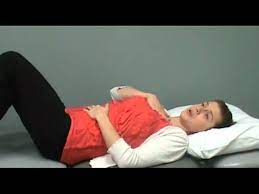
- This technique involves breathing deeply from the diaphragm, the muscle located between the chest and abdomen.
- To perform diaphragmatic breathing, sit or lie down in a comfortable position and place one hand on your chest and the other on your belly.
- Inhale deeply through the nose, allowing the belly to expand as a person breathe in.
- Exhale slowly through your mouth, allowing your belly to contract as you breathe out.
Pursed-lip breathing:

- This technique involves breathing out slowly through pursed lips, which can help regulate breathing and reduce shortness of breath. To perform pursed-lip breathing, inhale deeply through your nose, then exhale slowly through your mouth, pursing your lips as if you were going to whistle.
Rib-stretching exercises:
- These exercises can help improve chest wall mobility and relieve tension in the muscles of the chest.
- To perform a rib-stretching exercise, stand with your feet shoulder-width apart and place your hands on your ribcage.
- Inhale deeply, allowing your ribcage to expand outward.
- Exhale slowly, allowing your ribcage to contract inward.
Breath-holding exercises:
- These exercises can help improve lung function and increase lung capacity.
- To perform a breath-holding exercise, inhale deeply, hold your breath for a few seconds, and then exhale slowly.
- Gradually increase the length of time you hold your breath as your lung capacity improves.
It is important to talk to a healthcare provider or physical therapist before starting any new exercise program, including breathing exercises. They can help you determine which exercises are safe and appropriate for your condition and provide guidance on proper technique.
Strengthening exercises:
Strengthening exercises can help to improve the function of the muscles of the chest wall, which can reduce pain and improve mobility. These exercises may include resistance training, weight-bearing exercises, and other forms of exercise.
Strengthening exercises can be helpful in managing chest wall syndrome, as they can improve muscle strength and flexibility, reduce tension and pain, and promote better posture. Here are some strengthening exercises that may be useful for people with chest wall syndrome:
Chest press:
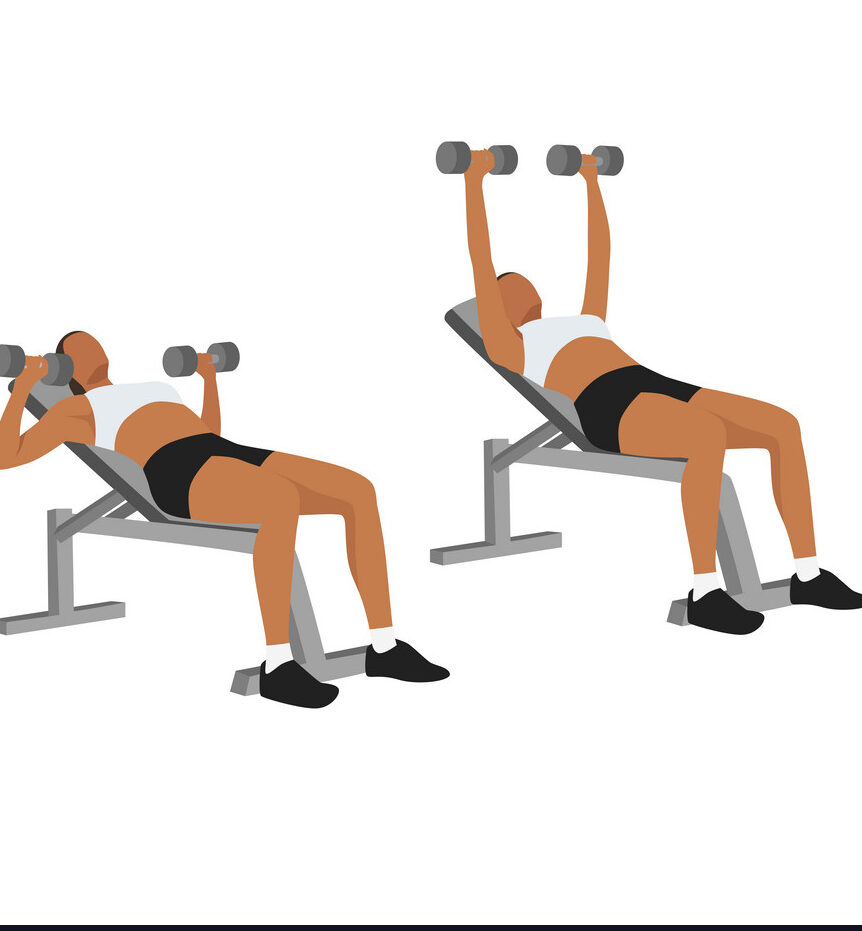
- Lie on the back with your arms bent and your palms facing down.
- Slowly lift the arms toward the ceiling, keeping up the elbows bent and the palms facing each other.
- Hold for 10 seconds, then slowly lower the arms back down.
Wall push-ups:

- Start with standing facing a wall with the feet shoulder-width apart.
- Put both hands on the wall at shoulder height and shoulder width apart.
- Slowly lower your body toward the wall, bending your elbows, and then push yourself back up to the starting position.
Scapular retraction:
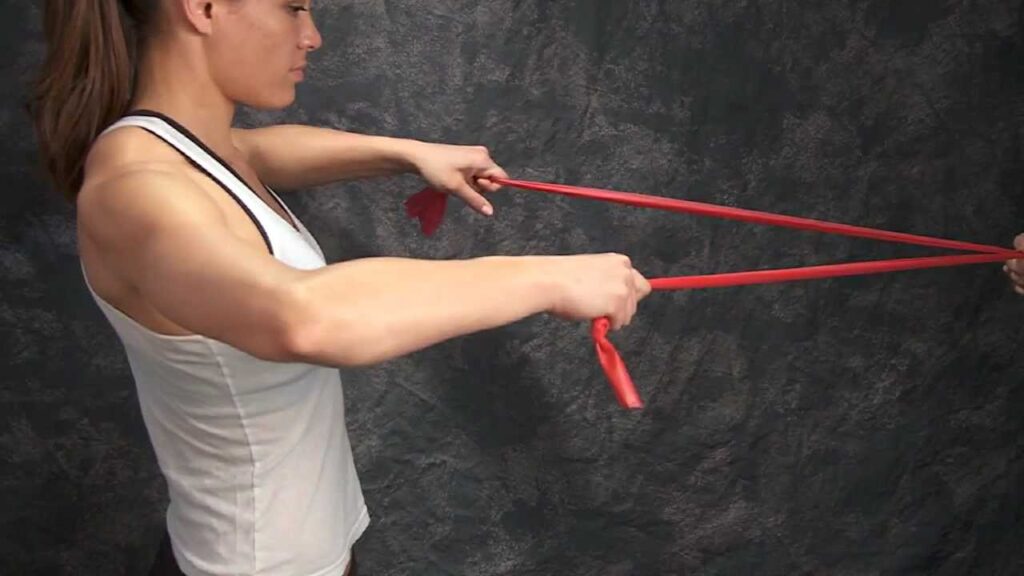
- Sit or stand with your arms at your sides and your palms facing forward.
- Squeeze the shoulder blades together, bringing them toward the spine.
- Hold for a few seconds, then release.
Shoulder shrugs:
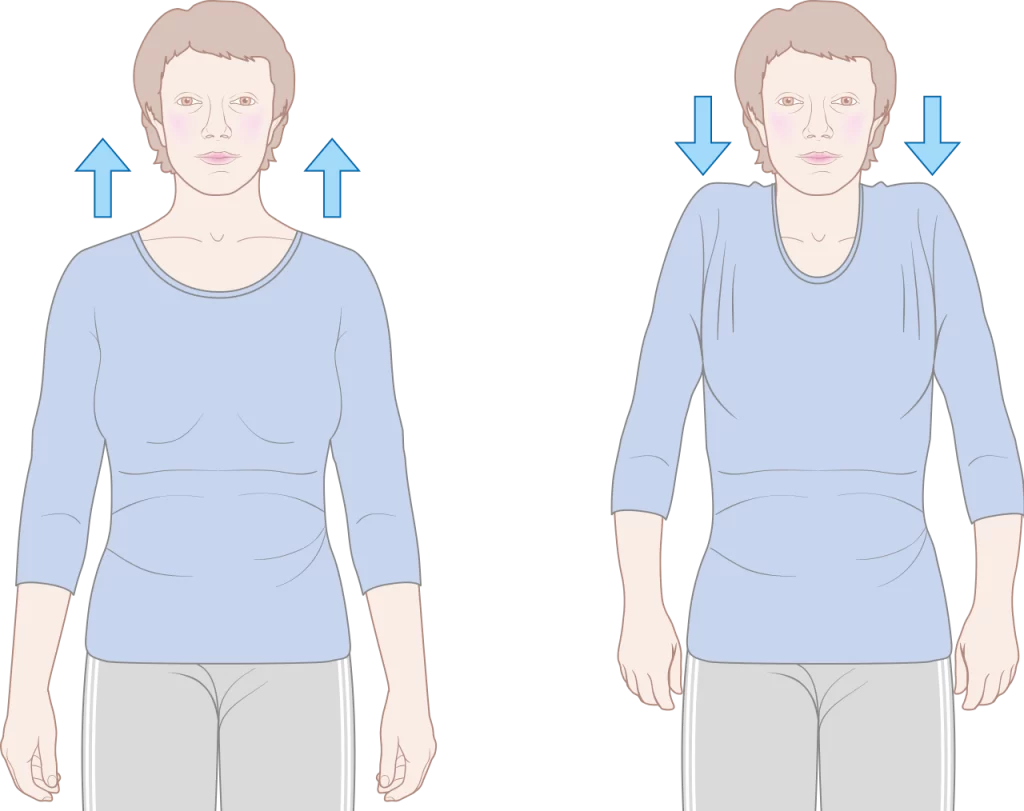
- Stand or sit with the arms at the sides.
- Slowly lift your shoulders toward your ears, hold for a few seconds, then relax.
Resistance band exercises:
- Resistance bands can be used to do different types of exercises that target the muscles of the chest wall.
- For example, a person may use a resistance band to perform chest flys, chest presses, and rowing exercises.
It is important to talk to a healthcare provider or physical therapist before starting any new exercise program, including strengthening exercises. They can help you determine which exercises are safe and appropriate for your condition, provide guidance on proper technique, and create a customized exercise plan that meets your specific needs and goals.
Education:
- Physiotherapists can provide education to patients about chest wall syndrome, including information about the condition, its causes, and its management.
- This can help patients to better understand their condition and make informed decisions about their treatment.
Overall, physiotherapy can be an effective treatment option for chest wall syndrome, helping to reduce pain, improve mobility, and restore function. If you are experiencing symptoms of chest wall syndrome, it is important to consult with a physiotherapist or other healthcare professional to determine the best course of treatment for your individual needs.
Summary
Since most cases of chest wall pain are caused by musculoskeletal conditions, the outlook is usually very good. Most individuals may make a full recovery with rest and physical therapy over the course of a few weeks.
Other causes of chest wall pain can be managed with medications and some other types of treatments, but this depends on the severity of the condition. Treatments for rheumatoid arthritis, for example, may help to manage the pain, control the inflammatory response, and eventually lead to remission.
Heart attacks and pulmonary embolisms may be life-threatening if left untreated. A person should seek emergency medical care right away if a person has any of the following symptoms along with chest wall pain:
- Shortness of breath
- Sudden and severe pain in your lungs
- Lightheadedness, weakness, dizziness, or fainting
- Cough with dark-colored sputum or blood
- dark red or black stools
- Nausea
- High fever
FAQ
Musculoskeletal conditions are the most usual cause of chest pain presenting to general practice. It is critical to find out about other serious conditions, like cardiovascular disease, prior to making a diagnosis of MCWP.
Many causes of chest wall pain are not a cause for trouble. Although, when chest pain does not go away on its own or gets worse, an individual requires medical care. Look out for symptoms of a heart attack or other conditions that need emergency care.
Noncardiac chest pain is defined as recurring pain in the chest — typically, behind the breast bone and near the heart — that is not related to the heart. In most individuals, noncardiac chest pain is actually related to a problem with their esophagus, most frequently gastroesophageal reflux disease (GERD).
If the muscles and bones of the chest wall have been strained or injured in some way, any type of movement of the torso may cause pain. As a result, a person can experience chest pain while a person is sleeping, particularly if they frequently change positions or fall asleep on their chest.
How a person sleep – lying on the back puts extra pressure on the chest and lungs. This makes it harder to breathe. It may also trigger a cough because the mucus in the nose may drip to the back of the throat. If a person gets acid reflux lying flat might make it worse, and the acid may irritate the airways.

